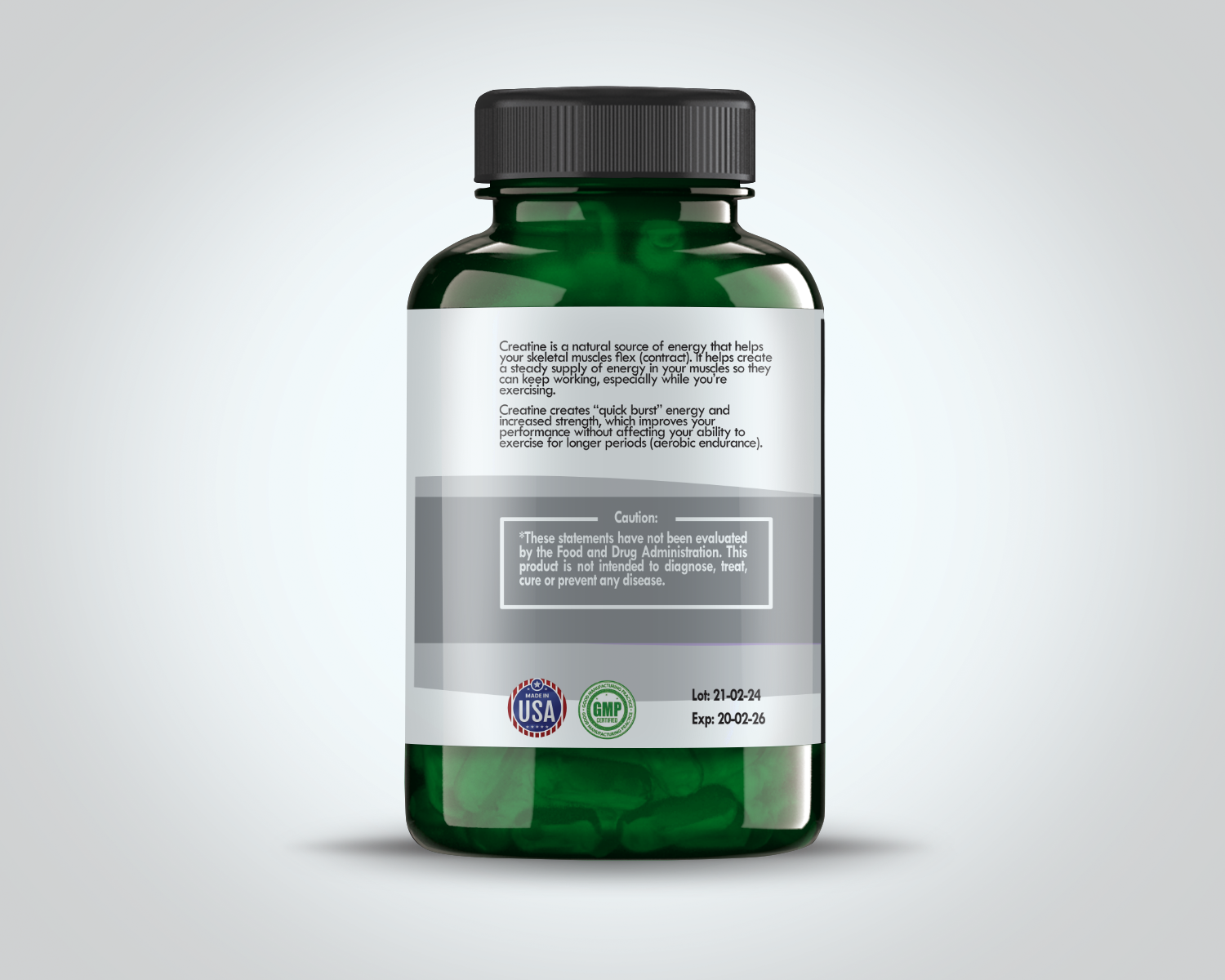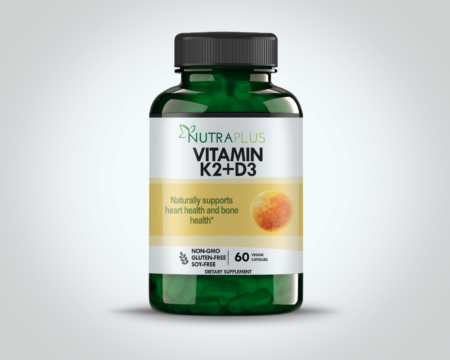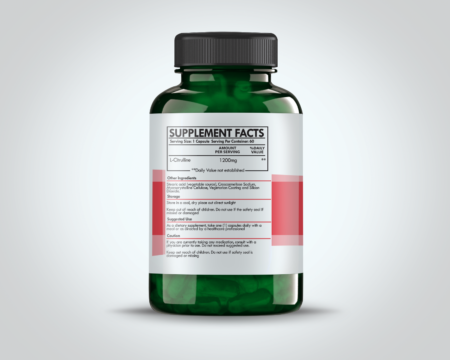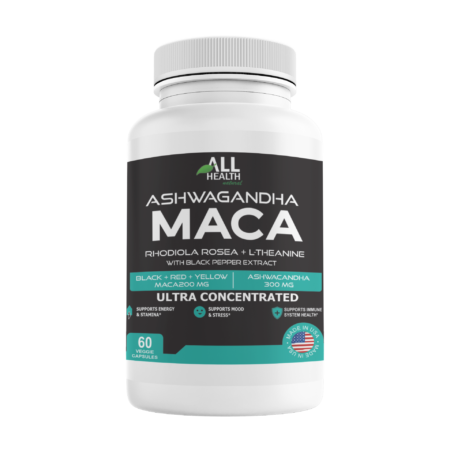Creatine is a naturally occurring compound that plays a pivotal role in energy production within muscle cells. It is synthesized primarily in the liver, kidneys, and pancreas from amino acids like arginine, glycine, and methionine. Stored predominantly in skeletal muscle, creatine serves as a readily available energy source during short bursts of high-intensity activities, such as weight lifting, sprinting, and other explosive movements.
Nutraplus Creatine
$13.99
Descripción
Introduction to Creatine: What It Is and How It Works
Creatine is a naturally occurring compound that plays a pivotal role in energy production within muscle cells. It is synthesized primarily in the liver, kidneys, and pancreas from amino acids like arginine, glycine, and methionine. Stored predominantly in skeletal muscle, creatine serves as a readily available energy source during short bursts of high-intensity activities, such as weight lifting, sprinting, and other explosive movements.
At a molecular level, creatine contributes to the formation of adenosine triphosphate (ATP), the primary energy carrier in cells. During intense exercise, ATP is rapidly depleted, and creatine phosphate helps replenish ATP stores, thereby sustaining muscle contraction and enhancing performance. This immediate replenishment of ATP is how creatine aids athletes in improving their power output and overall exercise capacity.
Several forms of creatine supplements are available on the market, each with unique characteristics. Creatine monohydrate is the most common and extensively researched, known for its efficacy in boosting athletic performance and muscle mass. Other variants include creatine ethyl ester, which is purported to offer better absorption rates, and buffered creatine, which claims to be easier on the stomach without compromising efficiency.
The use of creatine in sports dates back to the early 20th century, but it gained significant popularity in the 1990s. Its supplementation has been associated with enhanced athletic performance, expedited muscle recovery, and increased lean muscle mass. Athletes from various disciplines have adopted creatine to gain a competitive edge, leading to its widespread acceptance in both professional and recreational sports communities.
Today, creatine is not only celebrated for its performance-enhancing benefits but also for its potential to improve muscle recovery post-exercise. Regular use can help reduce muscle damage and inflammation, allowing athletes to train harder and more frequently without compromising their recovery. As research continues to unlock the myriad benefits of creatine supplementation, its relevance in athletic and everyday contexts remains strongly endorsed.
“`
Benefits of Creatine Supplementation
Creatine supplementation has garnered significant attention within the athletic and fitness communities due to its myriad benefits. One of the most well-documented advantages is its ability to enhance athletic performance, particularly in activities that involve short bursts of intense effort. These activities include weightlifting, sprinting, or football, where quick, powerful movements are crucial. Creatine works by increasing the availability of adenosine triphosphate (ATP) in muscles, which serves as a primary energy carrier. This increased ATP availability allows athletes to perform at their peak for longer durations, thereby improving overall performance.
Beyond performance boosts, creatine has been shown to contribute significantly to muscle mass gains. Studies have illustrated that individuals who incorporate creatine into their training regimens typically experience an increase in muscle fiber size, a process known as hypertrophy. This augmentation is often accompanied by enhanced strength, enabling athletes to lift heavier weights or execute more challenging routines. For those aiming to maximise their training outcomes, creatine offers a substantial edge.
Moreover, creatine supplementation is not restricted to physical benefits alone. Recent research points towards its potential cognitive benefits. Creatine has been linked to improved memory and resistance to mental fatigue. These cognitive enhancements are particularly beneficial for high-intensity tasks that require both physical and mental exertion. By improving mental stamina, creatine aids in maintaining focus and performance, making it a valuable supplement for both athletes and individuals engaged in cognitively demanding activities.
Scientific backing for creatine’s efficacy is robust. Numerous studies, including those published in peer-reviewed journals, have consistently shown positive results. Researchers and experts alike vouch for its benefits, reinforcing its legitimacy as a supplement. For anyone looking to enhance physical performance, increase muscle mass, or boost cognitive function, creatine presents itself as a scientifically supported option worth considering.
How to Take Creatine: Dosage, Timing, and Loading Phases
Proper use of creatine supplements can significantly enhance athletic performance and muscle growth. One commonly adopted method is the loading phase strategy, which aims to saturate muscles with creatine quickly. During the loading phase, users typically consume 20 grams of creatine per day, divided into four 5-gram servings. This phase usually lasts for 5-7 days, allowing muscles to reach full saturation.
Following the loading phase, individuals transition to a maintenance dose of 3-5 grams per day. This lower daily dosage helps to maintain the elevated creatine levels within the muscles. Research supports that both the loading and maintenance phases are effective in increasing creatine stores. However, some users may prefer a more gradual approach, opting to skip the loading phase and start directly with the maintenance dose. This method still yields significant benefits, although it may take longer to achieve peak creatine levels.
When considering the timing of creatine supplementation, studies suggest advantages to taking creatine either before or after workouts. Consuming creatine post-workout is often recommended as it may be more effectively absorbed when insulin levels are elevated. Pairing creatine with carbohydrates or a carbohydrate-protein blend can enhance absorption and efficacy. For instance, mixing creatine with a post-workout shake or a carbohydrate-rich meal could facilitate optimal uptake.
There are a few important safety tips to keep in mind while using creatine. Staying well-hydrated is crucial, as creatine can increase water retention in muscle cells. Drinking sufficient water helps prevent potential dehydration. Although generally safe for most individuals, those with pre-existing kidney conditions should consult a healthcare professional before starting creatine supplementation. Regular monitoring of kidney function can ensure safe and effective usage.
Common queries about creatine often concern potential side effects. While minor gastrointestinal discomfort or muscle cramping can occur initially, these symptoms usually subside as the body adjusts. Adhering to suggested dosages makes creatine a safe and effective supplement for enhancing physical performance and muscle growth.
Potential Side Effects and Safety of Creatine Supplementation
Creatine supplementation is widely recognized for its benefits in enhancing athletic performance and muscle growth. However, like any supplement, it is essential to understand the potential side effects and safety concerns associated with its use. Common side effects reported by individuals taking creatine include weight gain, often attributed to water retention in muscle tissues, and digestive issues such as stomach cramps, nausea, and diarrhea. Additionally, some users experience muscle cramps, which are generally linked to dehydration or electrolyte imbalances.
To ensure the safe use of creatine, adherence to recommended dosages is critical. Excessive intake of creatine can exacerbate digestive discomfort and might strain the body’s systems. Most research suggests a loading phase of 20 grams per day for five to seven days, followed by a maintenance dose of up to five grams per day. However, consulting with healthcare professionals before beginning a creatine regimen is indispensable, particularly for individuals with preexisting health conditions.
Long-term studies on creatine supplementation reveal that it does not pose significant risks to kidney and liver health when taken at recommended doses. Research involving both short-term and long-term administration of creatine has demonstrated no adverse effects on renal and hepatic function in healthy individuals. Nonetheless, those with preexisting kidney conditions should exercise caution and seek medical advice before using creatine supplements.
It is also important to address the safety of creatine use in specific populations. For instance, pediatric use requires careful monitoring due to the paucity of extensive studies on children and adolescents. Equally, pregnant or breastfeeding women should avoid creatine supplementation unless explicitly advised by their healthcare provider.
In summary, creatine supplements are generally safe for most individuals when used responsibly and under medical guidance. Understanding potential side effects and adhering to recommended dosages ensures a beneficial and safe supplementation experience. Balancing enthusiasm with caution, and recognizing individual health profiles, can significantly mitigate risks and enhance the efficacy of creatine use.
Información adicional
| shoe-size | 7, 7.5, 8, 8.5, 9, 9.5 |
|---|














Valoraciones
No hay valoraciones aún.